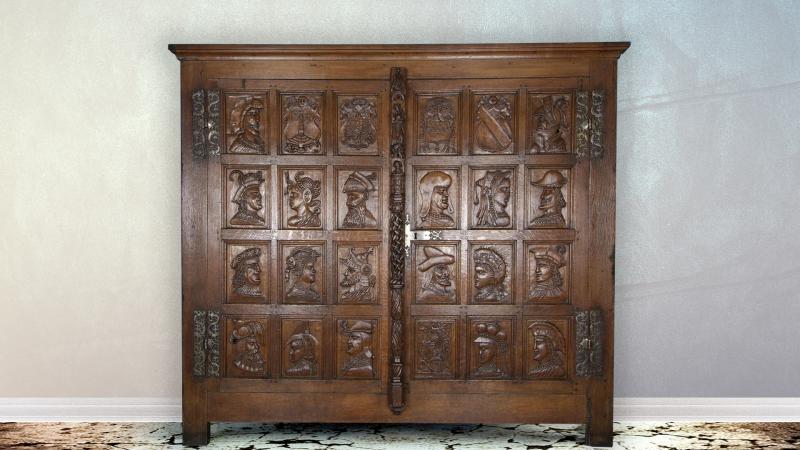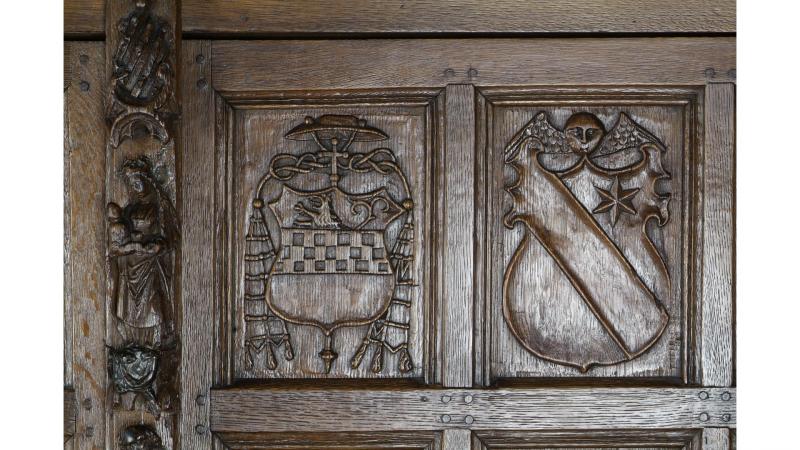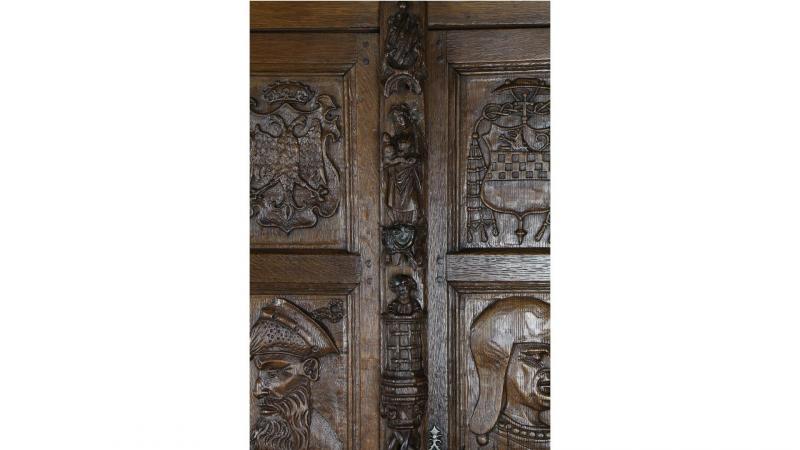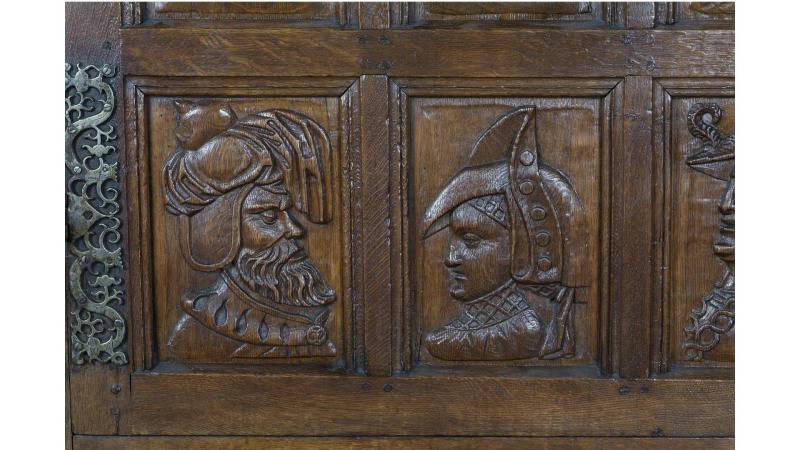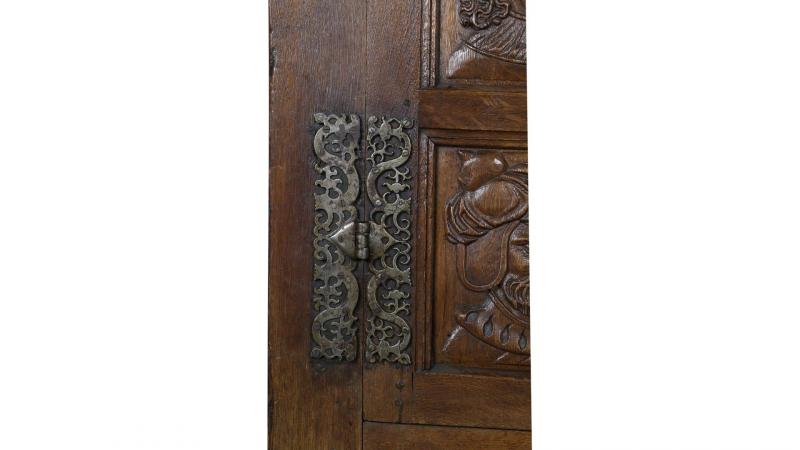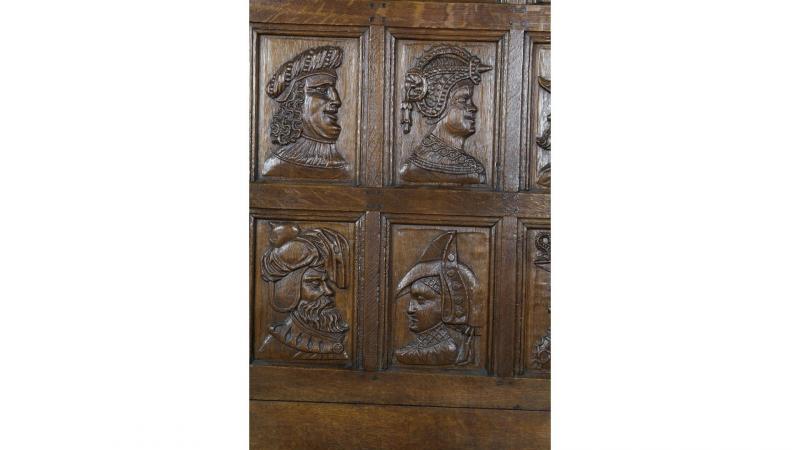Tradition has primarily associated this piece of furniture with the name of the Prince-Bishop (1505–1538), who was also a lavish philanthropist. It would be advisable, however, to speak more modestly of a cabinet bearing the arms of the Donceel family from Liège. In fact, these weapons are most likely a mark of ownership; they appear on the trumeau and in one of the twenty-four panels that have been assembled to create the two leaves of this prestigious cabinet. The other three coats of arms that are next to them are those of the Holy Roman Empire, the City of Liège - with the mention "Li ge" on the stoop – and that of Erard de la Marck. The latter figure is wearing a cardinal hat, which allows us to date the piece to between 1521 and 1538.
Attempts have occasionally been made to recognise contemporary figures, even the ancestors of the cardinal, in the twenty profile heads, particularly the famous Guillaume de la Marck, known as being the man "with the beard", a sort of condottiere, who was beheaded in Maastricht in 1485 after having tried to place his son John at the head of the episcopal principality. Some historians continue to shamelessly confuse the latter with his brother, Evrard III, who bore the nickname "Wild Boar". The presence of these two important characters in the history of Liège at the end of the 15th century is nothing less than purely hypothetical!
The fact that one of the twenty "portraits" on the right leaf features a graphically different design might suggest that the piece stems from the post-Renaissance period. It should be noted, however, that it is of the same type as those on the closing doors of the Namur churches of Biesme and Malonne, which are also indisputably from the first half of the 16th century.
Unlike that of the 18th century, the furniture of Liège during this period has not yet benefited from an indispensable critical analysis, and an "archaeological" comparison with other very close testimonials that are currently preserved at the Museum of Decorative Arts in Paris, as well as at the castle of Langeais...
This masterpiece presents an interesting avenue, being the only furniture from the 16th century in Liège and undoubtedly originating from the Prince-Bishops' Palace. Its two upper panels are carved and represent St. Michael and the Angel stopping Balaam.
